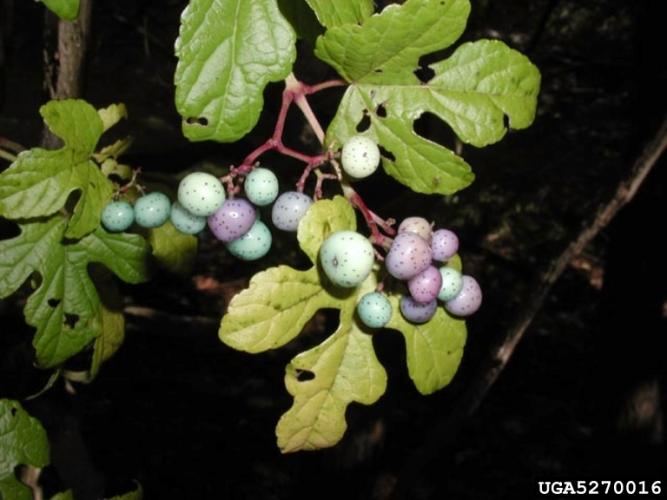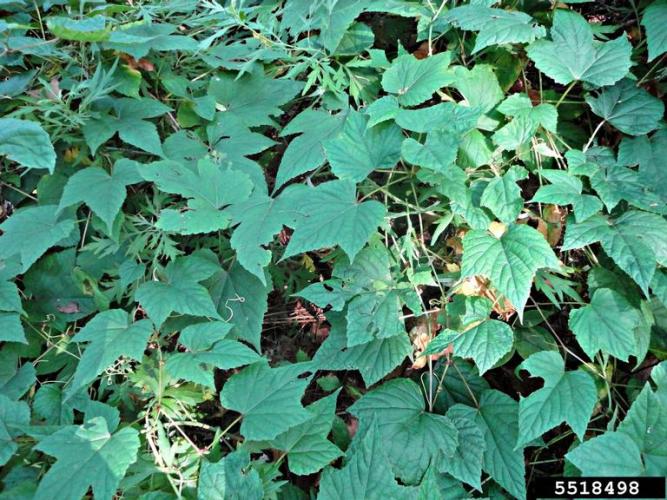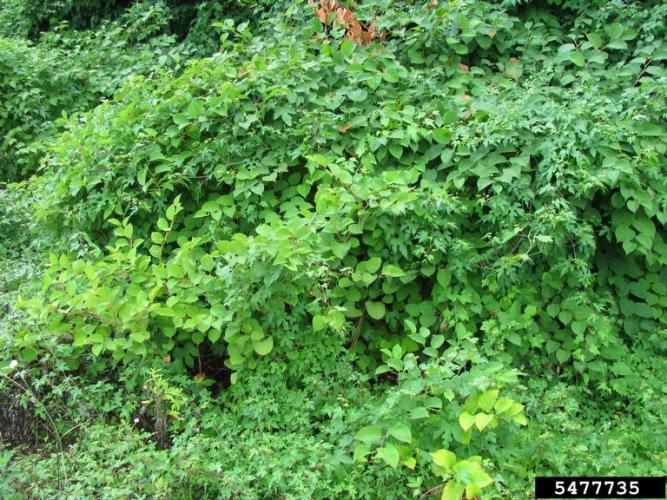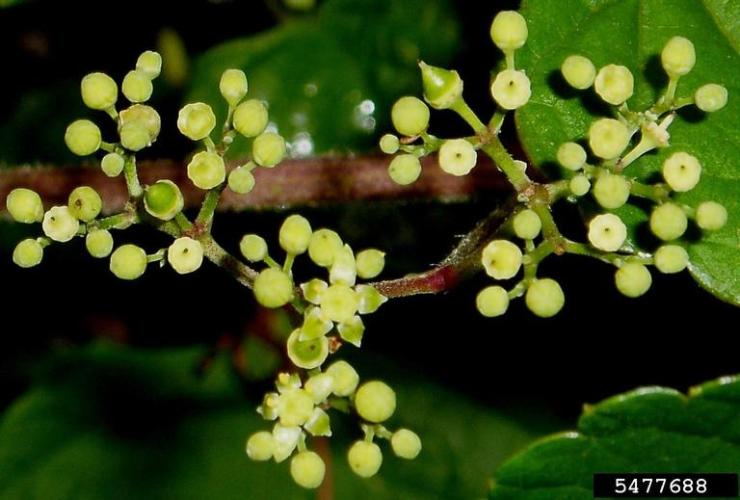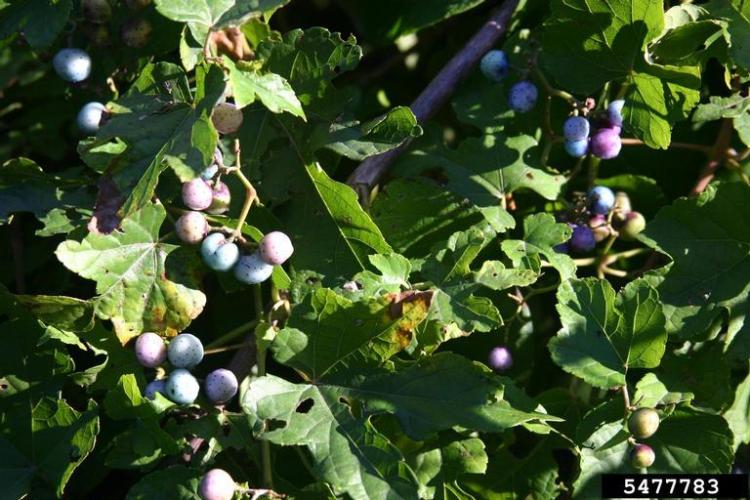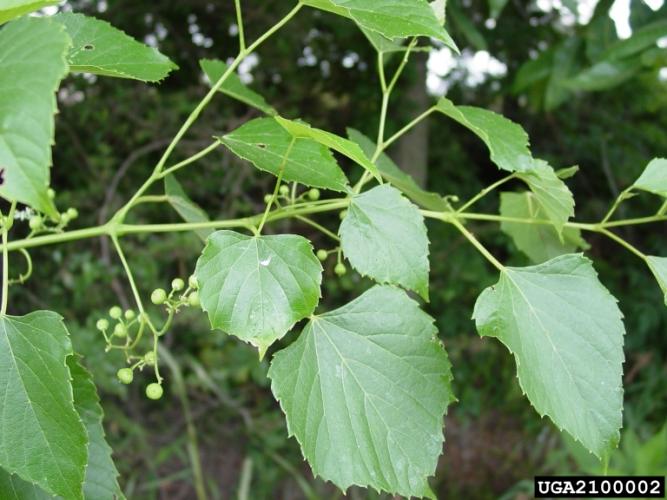Porcelain berry
Identification
Appearance
Ampelopsis glandulosa var. brevipedunculata has become a serious invader of the eastern United States and closely resembles native species of grape. It is a deciduous, woody vine that climbs to heights of more than 20 feet. These branched tendril-bearing, woody vines (native grapes have unbranched tendrils) have lenticels and white piths that are continuous across the nodes. Bark is ridged and furrowed, whereas native grape bark is shredded.
Foliage
The alternate leaves are simple and heart-shaped with coarse teeth along the margins. The leaves vary from slightly lobed to deeply dissected.
Flowers
Flowering occurs in mid-summer, when greenish to white, inconspicuous flowers develop in small clusters.
Fruit
Fruits are small berries that range from yellow to purple to blue in color.
Biology
Origin
Porcelein berry is native to Japan and northern China and was first introduced into the United States in 1870 as an ornamental and landscaping plant.
Habitat
Widely planted as an ornamental, this fast-growing liana (a woody, climbing or trailing plant that does not support its weight) is now considered highly invasive in the forest edges, lake shores, and disturbed habitats in which it rapidly spreads.
Threat
Thick mats of vegetation formed by porcelain-berry can easily shade out native trees and shrubs. It is able to spread quickly over long distances via bird and animal dispersed seeds.
Lifecycle
Porcelain berry spreads by seed and through vegetative means. The colorful fruits, each with two to four seeds, attract birds and other small animals that eat the berries and disperse the seeds in their droppings. The seeds of porcelain-berry germinate readily to start new infestations. Porcelain-berry is often found growing in riparian areas downstream from established patches, suggesting they may be dispersed by water also. The taproot of porcelain-berry is large and vigorous. Resprouting will occur in response to cutting of above-ground portions.
Vermont Distribution
iNaturalist project: Mapping for Healthy Forests Vermont
iNaturalist reports 9 locations in Vermont, 3 of which are research grade confirmed.
How You Can Help
Porcelain berry is on the early detection list of plant species. Early detection of new infestations increases our ability to slow their spread and potentially eradicate them from affected areas.
Citations
photo credit
Porcelainberry, UGA 5270016, Leslie J. Mehrhoff, University of Connecticut, Bugwood.org
Foliage, 5518498, Ansel Oommen, Bugwood.org
Infestation, 5477735, Leslie J. Mehrhoff, University of Connecticut, Bugwood.org
Flowers, 5477688, Leslie J. Mehrhoff, University of Connecticut, Bugwood.org
Fruit, 5477783, Leslie J. Mehrhoff, University of Connecticut, Bugwood.org
Heartleaf peppervine, 2100002, Charles T. Bryson, USDA Agricultural Research Service, Bugwood.org
information credit
Adirondack Park Invasive Plant Program
Center for Invasive Species and Ecosystem Health
